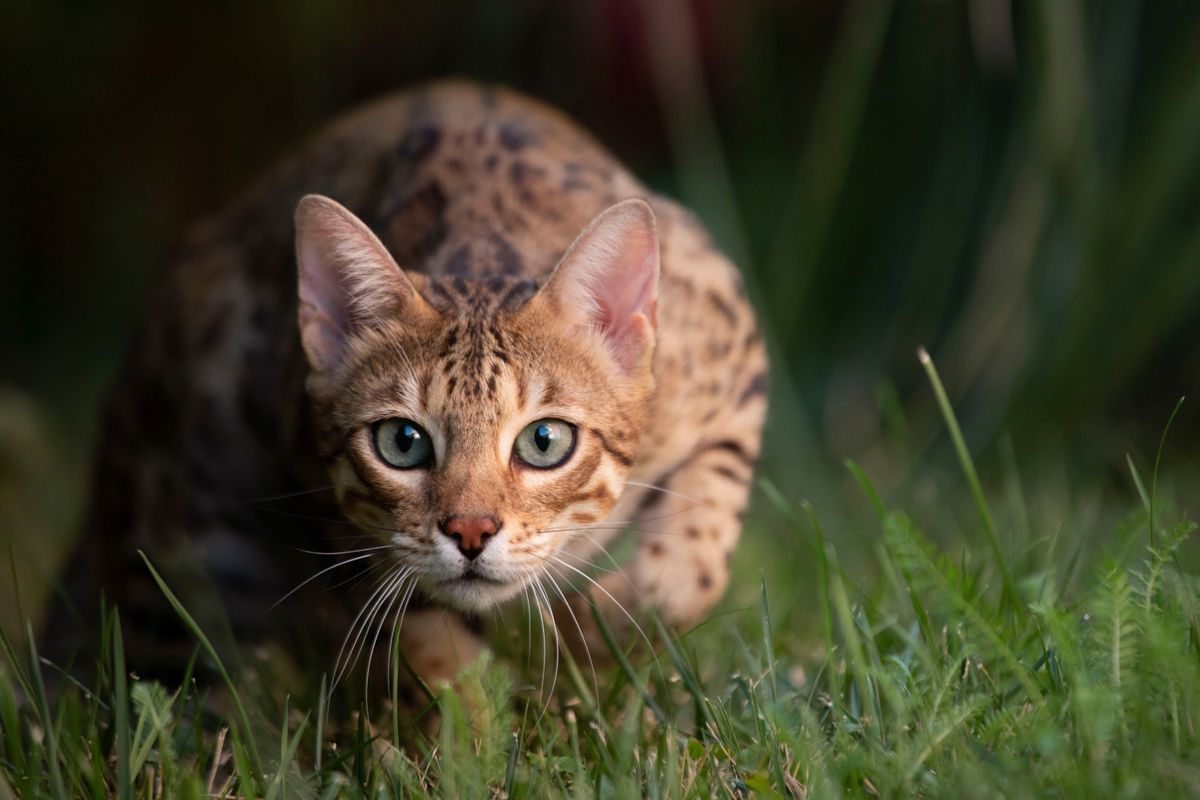The domestic cat is a member of the Felidae, a family that has a common ancestor from about 10 to 15 million years ago. The evolutionary radiation of the Felidae began in Asia during the Miocene around 8.38 to 14.45 million years ago. Analysis of mitochondrial DNA of all Felidae species indicates a radiation at 6.46 to 16.76 million years ago. The genus Felis genetically diverged from other Felidae around 6 to 7 million years ago. Results of phylogenetic research shows that the wild members of this genus evolved through sympatric or parapatric speciation, whereas the domestic cat evolved through artificial selection. The domestic cat and its closest wild ancestor are diploid and both possess 38 chromosomes and roughly 20,000 genes.
The domestic cat's hearing is most acute in the range of 500 Hz to 32 kHz. It can detect an extremely broad range of frequencies ranging from 55 Hz to 79 kHz, whereas humans can only detect frequencies between 20 Hz and 20 kHz. It can hear a range of 10.5 octaves, compared to about 9 octaves for humans and dogs. Its hearing sensitivity is enhanced by its large movable outer ears, the pinnae, which amplify sounds and help detect the location of a noise. It can detect ultrasound, including ultrasonic calls from rodent prey. Research has shown that cats have socio-spatial cognitive abilities to create mental maps of familiar people's locations based on hearing their voices.
A kitten is a juvenile cat. After being born, kittens display primary altriciality and are fully dependent on their mothers for survival. They normally do not open their eyes for seven to ten days. After about two weeks, kittens develop quickly and begin to explore the world outside their nest. After a further three to four weeks, they begin to eat solid food and grow baby teeth. Domestic kittens are highly social animals and usually enjoy human companionship.
Cats have seven cervical vertebrae (as do most mammals); 13 thoracic vertebrae (humans have 12); seven lumbar vertebrae (humans have five); three sacral vertebrae (as do most mammals, but humans have five); and a variable number of caudal vertebrae in the tail (humans have only three to five vestigial caudal vertebrae, fused into an internal coccyx). The extra lumbar and thoracic vertebrae account for the cat's spinal mobility and flexibility. Attached to the spine are 13 ribs, the shoulder, and the pelvis. Unlike human arms, cat forelimbs are attached to the shoulder by free-floating clavicle bones which allow them to pass their body through any space into which they can fit their head.
They are easily startled because they have a very sensitive nature. They are always on high alert for predators. They are considered prey animals due to their size, just as rabbits and other small animals. Without this instinct, they may have become extinct long ago. The cat has been around for a long time.
